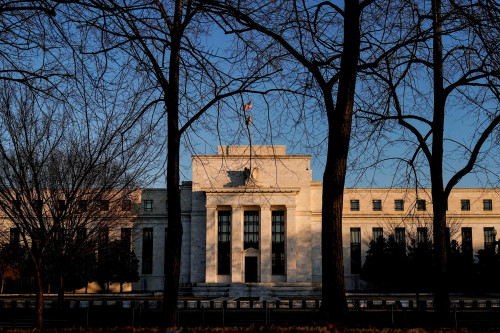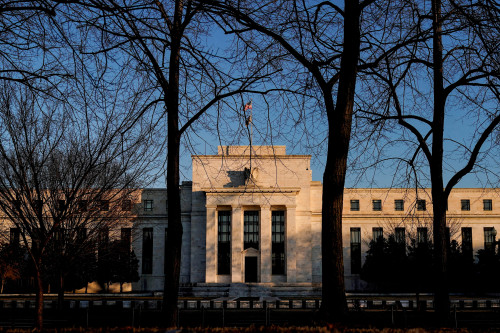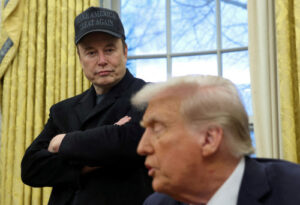By Howard Schneider and Ann Saphir
WASHINGTON (Reuters) -President Donald Trump’s initial policy proposals raised concern at the Federal Reserve about higher inflation, with firms telling the U.S. central bank they generally expected to raise prices to pass through the cost of import tariffs, policymakers said at a meeting held about a week after Trump’s January 20 inauguration.
Participants at the U.S. central bank’s January 28-29 meeting “generally pointed to the upside risks to the inflation outlook,” rather than risks to job market, according to the minutes from the meeting, which were released on Wednesday. “In particular, participants cited the possible effects of potential changes in trade and immigration policy, the potential for geopolitical developments to disrupt supply chains, or stronger-than-expected household spending.”
While still having faith that price pressures will continue to ease, “other factors were cited as having the potential to hinder the disinflation process,” the minutes said, including the fact that “business contacts in a number of (Fed) districts had indicated that firms would attempt to pass on to consumers higher input costs arising from potential tariffs.”
Participants also noted that some measures of inflation expectations, a key concern for the Fed, “had increased recently.”
Financial markets were little changed after the release of the minutes, with interest rate futures indicating the Fed’s likely first, and perhaps only, rate cut of 2025 would occur in July.
Policymakers at last month’s meeting agreed they should hold interest rates steady until it was clear that inflation, largely stalled since the middle of 2024, would dependably fall to the central bank’s 2% target.
Fed staff had already changed their outlook at the December 17-18 meeting to show expected slower growth and higher inflation based on “placeholder assumptions” about Trump’s likely actions when he began his second term in the White House. The president started providing details in his first days in office, including proposed 25% tariffs on Canada and Mexico, and a lockdown of the U.S.-Mexico border.
The Fed kept its benchmark interest rate in the current 4.25%-4.50% range at its meeting last month, and officials since then have said they are in no rush to cut rates again until they are more certain inflation will decline to the 2% target from current levels around half a percentage point above that level.
Understanding the impact of Trump’s policies has become a central part of that debate.
DEBT CEILING, FRAMEWORK
In another sign of how fiscal policy may impact central bank decision-making, the minutes said “various” policymakers noted it may be appropriate to consider slowing or pausing the Fed’s ongoing shrinking of its balance sheet in light of federal “debt ceiling dynamics.”
Current federal funding runs out after March 14, and lawmakers will need to act by the summer to raise their self-imposed debt ceiling or risk a default.
Fed officials used the January meeting to kick off what’s expected to be a months-long review of the central bank’s policy framework, including potential revisions to the statement’s focus on the risks to the economy when the benchmark interest rate is near the zero level.
They also made it clear they would not change their commitment to a 2% inflation goal, or to achieving maximum employment.
The review is expected to wrap up by late summer, the minutes said.
(Reporting by Howard Schneider and Ann Saphir; Editing by Paul Simao)



